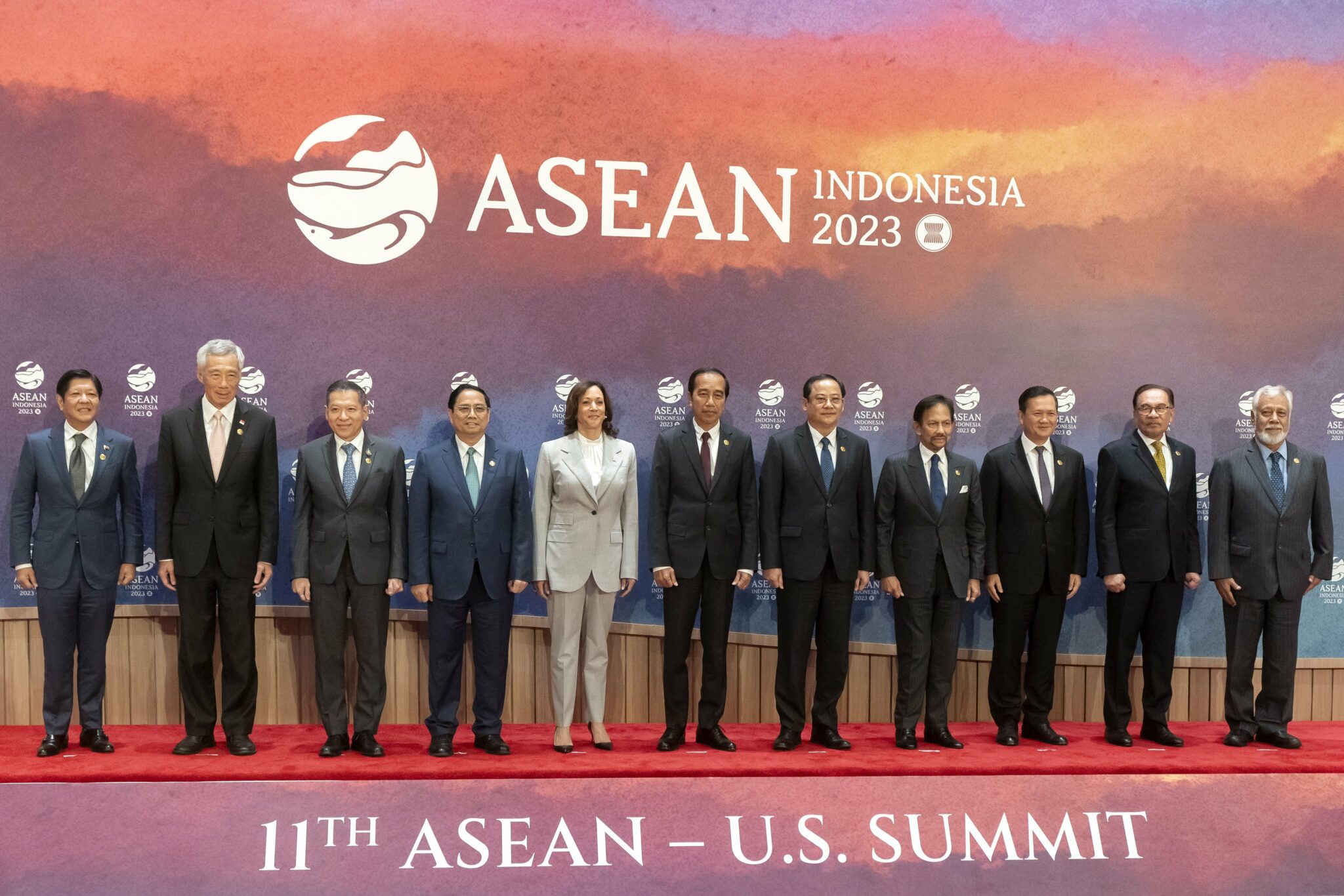Why ASEAN Should Not Be a US-China Battleground
BROOKINGS
APLN member Natalie Sambhi writes for Brookings on US-ASEAN relations, arguing that the US should respect Southeast Asian states’ sovereignty and legitimate interests, rather than viewing the region solely as a site of geopolitical competition.
In recent years, the United States has sought to deepen its relationship with Southeast Asia, evidenced by steps such as the signing of the U.S.–ASEAN Comprehensive Partnership. Yet this stands against a backdrop of increasing ambivalence in Southeast Asian capitals about the United States. The 2024 survey by Singapore-based think tank ISEAS–Yusof Ishak Institute has shown that, for the first time, the region’s elites would likely side with China by a slim margin during a conflict with the United States, if given no other choice. Should Washington be concerned?
Working in the United States’ favor for closer ties with Southeast Asia is that the region’s states are looking for partners, particularly in security and economics. The Philippines has deepened defense ties with the United States, its ally, with the expansion of U.S. bases. Indonesia continues to proudly co-host Exercise Garuda Shield, a massive annual multinational exercise, while the Indonesian military strongly prefers working with its American counterpart and purchasing U.S. hardware. Singapore recently deepened its collaboration with Washington in AI and autonomous systems in the defense domain. Considered by some a “client state” of China, Cambodia looks poised to strengthen defense relations with the United States, especially further opportunities in accessing U.S. professional military education programs, which are well respected in the region.
Washington is also pushing on an open door when it comes to supporting economic goals among Southeast Asian partners. The same survey that gave rise to alarm about alignment shows clearly that Southeast Asian elites see “unemployment and economic recession” as well as “widening socio-economic gaps and rising income inequality” among their country’s top challenges for 2024. The region needs partners. In Vietnam, despite rejecting Hanoi’s bid for market economy status, greater trade and investment from the United States has been welcomed as part of the Comprehensive Strategic Partnership signed last year, particularly in financing private sector projects in infrastructure, healthcare, and small business sectors. Southeast Asia’s second-largest economy, Thailand is similarly enthusiastic about greater economic cooperation with the United States, particularly in supporting its automotive industry and in investing in power generation facilities. Meanwhile, American companies have created roughly 300,000 jobs in Malaysia and provide scholarships, helping it transition from a manufacturing-heavy economy to a high-value-based one.
And yet, U.S. policy insists on framing Southeast Asia as a battleground and viewing its engagement in the region through the prism of U.S.–China competition. China—Asia’s largest country by landmass—will always play an important role in the destiny of its southern partners, due to deep historical, socio-cultural, and economic ties, as well as its size and proximity. Therefore, seeking to compete for influence with a zero-sum mentality is unhelpful. Indeed, all Southeast Asian states will seek cooperation with the United States as a means of balancing China, however, they also do so with other partners, including India and Japan. The ASEAN region fears coercion not just from Beijing but from Washington. According to one Southeast Asia analyst, regional leaders are concerned with “inconsistencies in the United States’ actual policies and practices when realpolitik considerations kick in” and being forced to “define the China threat in the same all-encompassing way” as Washington currently does.
Read the full article here.
Image: U.S. Mission to ASEAN

